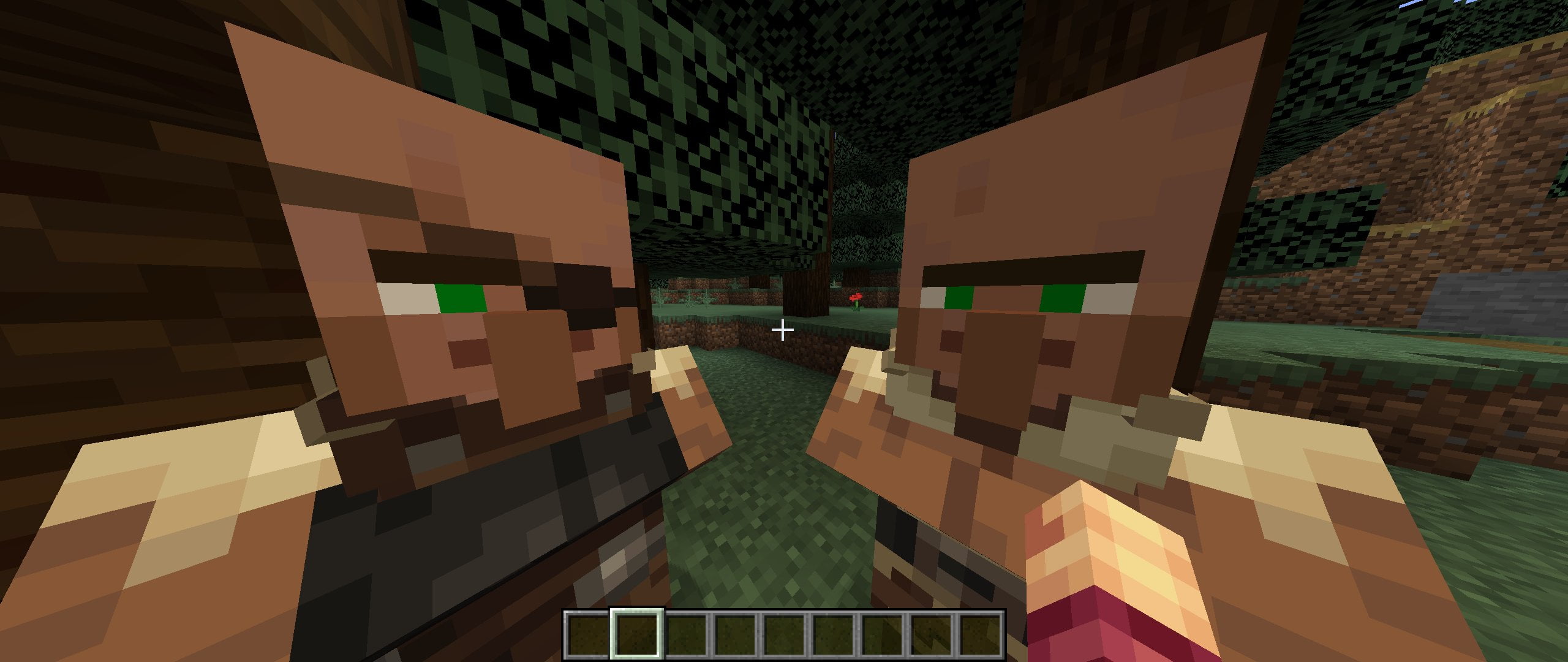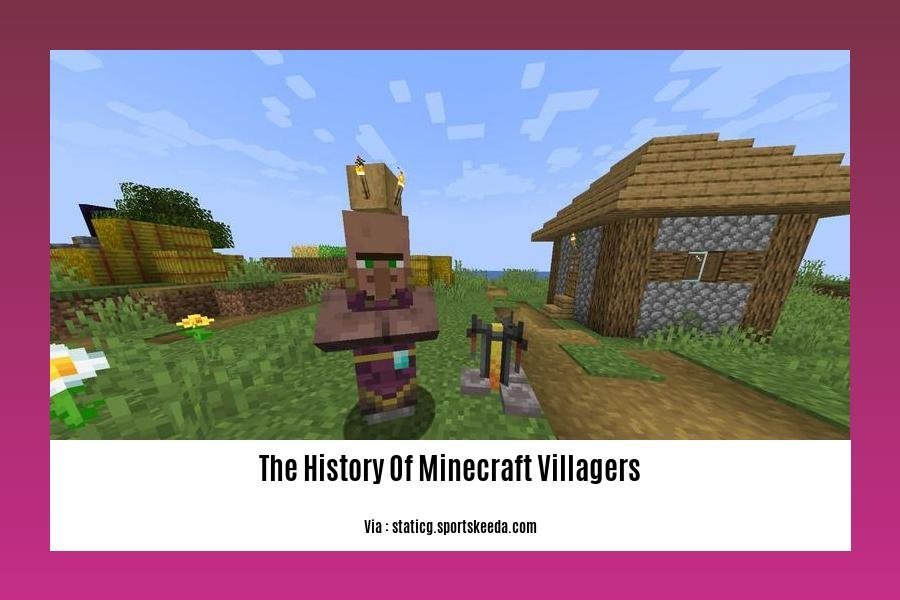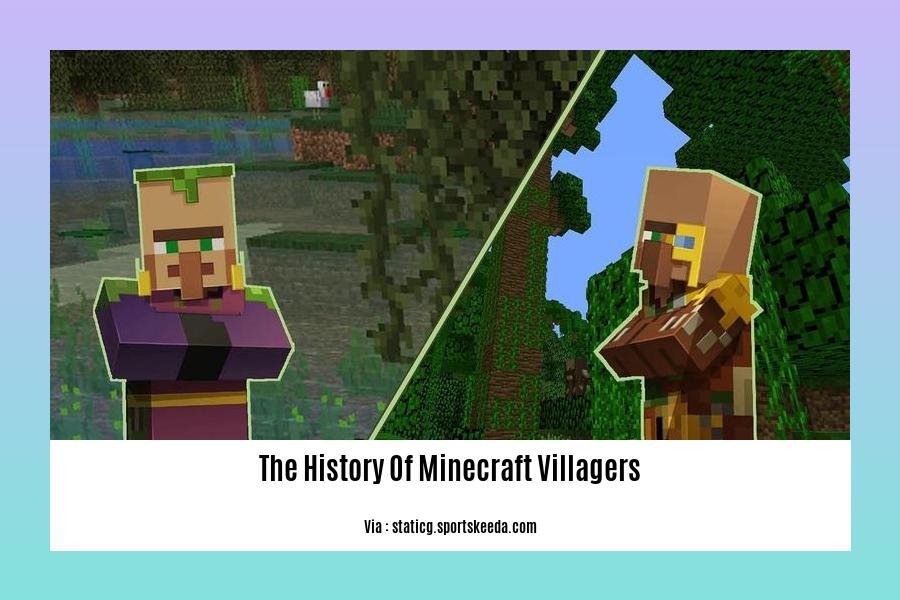Embark on a captivating journey through the annals of Minecraft, where we unravel the rich tapestry of its enigmatic villagers. From their humble origins in the game’s primordial landscapes to their pivotal role in shaping the expansive world of Minecraft, this article delves into the captivating history of these virtual denizens. Witness their evolution from simple trading partners to complex characters with unique quirks and personalities, as we explore the cultural significance and profound impact they have had on the Minecraft experience. Join us as we uncover the secrets behind [- The History of Minecraft Villagers: From Genesis to Grandeur -].
Key Takeaways:

- Minecraft villagers were introduced in October 2011.
- They spawn in villages and come with different occupations.
- Trading involves popularity within the village.
- Villagers now have schedules and routines.
- Curing zombified villagers transforms them back into normal ones.
The History Of Minecraft Villagers
The charming Minecraft villagers are far more than just passive NPCs populating the bustling virtual landscapes of the game. Their existence is woven into the very fabric of Minecraft’s rich history, evolving alongside the game and becoming an indispensable part of its ecosystem.
Villagers were first introduced in October 2011, taking their place among the diverse cast of Minecraft characters. Initially, they were simple beings, lacking the complex behaviors and interactions that would come to define them.
Over time, through the tireless efforts of Mojang developers, these humble villagers blossomed into vibrant and multifaceted entities. They gained unique professions, each with its own set of trades and quirks. Their artificial intelligence grew, allowing them to engage in complex interactions with players and their surroundings.
In the ever-evolving world of Minecraft, the significance of villagers cannot be overstated. They stand as living, breathing testaments to the game’s constant growth and refinement, mirroring the real-world advancements in artificial intelligence and social simulation. Their history is the history of Minecraft itself, a tale of innovation, creativity, and the relentless pursuit of a truly immersive gaming experience.
Key Moments in the Evolution of Minecraft Villagers:
October 2011: Introduction of villagers as non-player characters (NPCs).
April 2012: Villagers gain professions, adding depth to their interactions and trading options.
October 2012: Villagers are given schedules and routines, making their behavior more realistic and immersive.
October 2013: Zombified villagers are introduced, adding a new layer of challenge and complexity to village interactions.
October 2014: The History Of Minecraft Villagers gain the ability to breed, creating the potential for self-sustaining villages.
October 2019: Villagers receive a complete overhaul, with new models, textures, and behaviors, enhancing their individuality and personality.
Delve into the fascinating world of Minecraft’ history, where creativity knows no bounds. Explore the evolution of the game through the ages and uncover hidden secrets. Immerse yourself in the gripping tale of Minecraft’s enigmatic figure, Herobrine and witness the rise and fall of epic battles that shaped its virtual landscape. Trace the lineage of Minecraft’s notorious mobs and unravel the intriguing evolution of its speedrunning culture. Discover the origins of iconic Minecraft skins and delve into the pivotal role of updates in transforming the game into the colossal phenomenon it is today.
, underscore, & emphasize.
Evolution of Villagers through Minecraft Updates

Minecraft’s ever-evolving landscape has seen its villagers blossom from humble, passive NPCs into a sophisticated, captivating part of the game’s fabric. Their journey through Minecraft updates chronicles the steady advancement of AI and social simulation in video games.
Key Takeaways:
- Villagers debuted in 2011 as non-player characters, gradually gaining professions and complex AI.
- The Village and Pillaging update (2019) introduced major changes, transforming villagers into lively, dynamic members of the Minecraft world.
- Villagers now boast distinctive professions, elaborate trading systems, and intriguing daily routines.
A Timeline of Transformation
- 2012: Villagers acquire professions, adding depth to their roles within villages.
- 2012: Villagers establish daily schedules and routines, fostering a sense of realism.
- 2013: The introduction of zombified villagers adds a thrilling element of danger to encounters.
- 2014: Villagers gain the ability to breed, allowing players to expand their village populations.
- 2019: The Village and Pillaging update revamps villagers, introducing new professions, trading mechanics, and social interactions.
A Reflection of Progress
The evolution of villagers through Minecraft updates mirrors the broader advancements in AI and social simulation in gaming. As technology progresses, so does the complexity and depth of NPC characters, making them more engaging and integral to the overall gameplay experience.
Sources:
- The History of Villagers on the Minecraft Wiki
- All the New Villager Changes in 1.20.2 on The Nerd Stash
Impact and Significance on the Minecraft Ecosystem
Key Takeaways:
- Villagers serve as the foundation of village communities, contributing to the game’s social and economic dynamics.
- Their trading system facilitates resource acquisition, fostering player progression and community interaction.
- Villagers’ complex AI and emotional depth enhance the game’s immersion and provide opportunities for player engagement.
- The “Village and Pillaging” update revolutionized villager behavior, enriching the gameplay experience and increasing their relevance.
- Villagers’ cultural significance within the game mirrors advancements in AI and social simulation in video games.
Villagers have played a pivotal role in shaping the Minecraft ecosystem. As the heart of village communities, they establish a social fabric that enriches the game world. Their trading system, with its diverse offerings and negotiation mechanics, promotes economic growth and player cooperation.
Beyond their practical value, villagers possess a remarkable emotional depth. Their unique personalities, daily routines, and interactions with players add a layer of immersion that captivates and delights. Their complex AI allows them to respond dynamically to player actions, creating a sense of challenge and engagement.
The “Village and Pillaging” update marked a significant evolution for villagers. It introduced new professions, a more realistic schedule, and the ability to breed. These enhancements have made villagers more central to the gameplay experience and fostered a deeper connection between players and these virtual beings.
Moreover, villagers hold cultural significance within Minecraft. Their presence mirrors advancements in AI and social simulation in video games. They represent a milestone in player-NPC interaction, showcasing the potential of game characters to exhibit complex emotions and behaviors.
Relevant URL Sources:
- The History and Evolution of Minecraft
- Defining an Impact Game: Minecraft and Environmental Education
FAQ
Q1: When were Minecraft villagers initially introduced to the game?
A1: Villagers were first added to Minecraft in the Beta 1.9 pre-release 2 version in October 2011.
Q2: What is the purpose of villagers in Minecraft?
A2: Villagers serve as non-player characters (NPCs) that inhabit villages and interact with players. They can trade items, provide information, and add life to the virtual world.
Q3: How do villagers spawn in Minecraft?
A3: Villagers naturally generate in villages, which are structures found in various biomes throughout the game. These villages typically consist of houses, paths, and other buildings.
Q4: What are the different professions that villagers can have?
A4: Villagers in Minecraft can have a variety of professions, including farmer, butcher, librarian, priest, and many more. Their professions determine their behavior, appearance, and the items they trade.
Q5: How has the role of villagers evolved over the history of Minecraft?
A5: Villagers have undergone significant changes in behavior and mechanics throughout Minecraft’s history. The Village and Pillaging update in 2019 introduced new professions, daily schedules, and the ability to hold items they want to trade.
- SYBAU See You Baby Meaning: Gen Z Slang Evolves - July 1, 2025
- Unlock Your Inner Youth: Lifestyle Secrets for a Vibrant Life - July 1, 2025
- Decode SYBAU Meaning: Gen Z Slang Explained - July 1, 2025






